DaimlerChrysler AG
1000 Chrysler Drive
Auburn Hills, Ml 48326-2766
(248) 576-5741
70546 Stuttgart
Germany
49 711 17 0
www.dalmlerchrysler.com
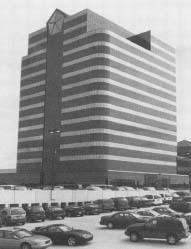
Chrysler has been part of American culture since automobiles were first introduced. For decades, it was the smallest of the "Big Three" U.S. automakers, trailing behind General Motors Corporation and Ford Motor Company (see entries). By the end of the 1970s, the company was in real trouble and made headlines when it had to ask for loans from the federal government to help get back on track. It took a CEO named Lee Iacocca to pull Chrysler out of the red and make it a more efficient and profitable company.
In 1998, Chrysler again shocked the business world when it merged with giant German auto manufacturer Daimler-Benz, producer of the Mercedes line of luxury cars. The new company became DaimlerChrysler AG, with headquarters in Stuttgart, Germany, and Auburn Hills, Michigan. As the new company entered the twenty-first century a reorganization of its U.S. operations was underway: employees were laid off, plants closed, and production decreased. Although the moves were drastic, they seemed to finally stabilize the company's financial position. In 2001, DaimlerChrysler reported sales of $136 billion and a net income of $590 million.
Beginning at Buick
The Chrysler Corporation was officially established in 1925 but its roots go back a decade earlier. In 1912, the founder of Chrysler, Walter Percy Chrysler (1875-1940), left a management job with the Great Western Railway in Chicago, Illinois, to become a production manager of General Motors's Buick division in Flint, Michigan. During his time at Buick, Chrysler made a name for himself as a top-notch manager, introducing efficient work methods and increasing production from twenty vehicles to over five hundred cars per day. He also worked alongside K. T. Keller, who would later play a major role at the Chrysler Corporation.
In 1916, Chrysler became president and general manager of the Buick division. With Chrysler at the helm, Buick soon became General Motor's biggest moneymaker. In 1919, Chrysler was promoted to vice president in charge of production at GM. His meteoric climb up the corporate ladder came to a halt, however, in 1920 when Chrysler resigned from the company because of differences with GM founder and chairman William C. Durant (1861-1947).
DaimlerChrysler at a Glance
- Employees: 421,000
- CEO: Juergen Schrempp
- Chrysler Group President and CEO: Dieter Zetsche
- Subsidiaries: Covisint; DaimlerChrysler Canada; Detroit Diesel Corporation; Freightliner LLC; New Venture Gear, inc.
- Major Competitors: British Motor Works; Ford Motor Company; General Motors Corporation; Toyota Motor Corporation.
- Notable Products: American LaFrance fire trucks; Freightliner commercial trucks; Chrysler PT Cruiser, Sebring, Voyager, Concorde; Dodge Caravan, Grand Caravan, Ram pickup truck, Neon, Dakota, Durango; Jeep Grand Cherokee and Wrangler; Mercedes-Benz luxury cars
A few months after leaving GM, the manager who could work miracles was recruited to be executive vice president of Willys-Overland, an auto company that was near bankruptcy. Chrysler earned an annual salary of $1 million, which was unheard of at the time. In 1921, Chrysler came to the aid of another car company in distress, Maxwell-Chalmers. As chairman of Maxwell, Chrysler worked with several of the company's engineers to build what would become the first Chrysler automobile. In 1925, the Maxwell Company became the Chrysler Corporation. By the end of 1925, there were thirty-eight hundred Chrysler dealers in the United States. The company went international a year later when Chrysler Canada was established. That same year, Chrysler Corporation jumped from being the twenty-seventh largest auto manufacturer in the country to the fifth largest. In 1927, it leaped to fourth place.
Timeline
- 1925:
- Chrysler Corporation is formed from the Maxwell Motor Company.
- 1928:
- Plymouth and DeSoto models are launched.
- 1935:
- K. T. Keller becomes president after founder Walter P. Chrysler resigns.
- 1940:
- Walter Chrysler dies.
- 1942:
- All Chrysler plants convert to military production.
- 1952:
- Chrysler wins the U.S. Army contract for the Jupiter missile program.
- 1955:
- Chrysler offers transistorized radios in its cars.
- 1958:
- Cruise control is introduced.
- 1961:
- Chrysler retires its DeSoto line of cars.
- 1964:
- Plymouth Barracuda, Chrysler's answer to the Ford Mustang, debuts.
- 1970:
- Chrysler partners with Mitsubishi to import Japanese cars.
- 1978:
- Lee lacocca is picked to head Chrysler.
- 1980:
- Chrysler receives $1.5 billion in federal loan guarantees.
- 1983:
- Chrysler finishes paying off its federal loan guarantees.
- 1987:
- American Motors Corporation is acquired by Chrysler.
- 1993:
- Lee lacocca retires from Chrysler.
- 1998:
- Chrysler merges with Daimler-Benz to become DaimlerChrysler AG.
- 2000:
- Dieter Zetsche becomes head of Chrysler Group; PT Cruiser is introduced.
- 2001:
- DaimlerChrysler announces it will close six plants and cut twenty-six thousand jobs.
Dodging the Depression
In 1928, Chrysler launched its Plymouth and DeSoto models, cars that were aimed at attracting customers who
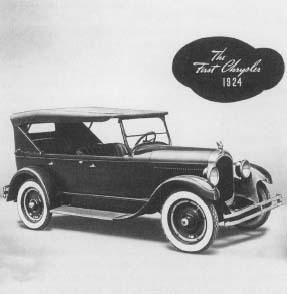
By the 1930s, the United States was in the grips of the Great Depression, with millions of people losing jobs and companies going under. Chrysler, however, managed to survive. It was the only American automobile manufacturer to increase it sales figures during the harsh economic times. In 1935, Chrysler resigned as president of Chrysler Corporation but remained as chairman of its board of directors. K. T. Keller, who came to Chrysler in 1926 from General Motors, was named president.
In 1942, Chrysler, like GM and Ford, stopped all civilian production and turned its plants over to producing military goods for the U.S. effort during World War II (1939-45). Among other vehicles, the company produced five hundred thousand Dodge trucks for military use. Once the war ended, Chrysler went back to designing and producing automobiles. The first all-new Chrysler models for consumers were unveiled in 1949.
The 1950s brought a number of innovations to Chrysler automobiles, including the first fully transistorized radios in passenger cars, air conditioning, and the first cruise control. With the 1960s came new models and the retirement of others. In 1960, Chrysler introduced the Valiant, its first compact car. The following year, 1961, brought the death of the DeSoto. And in 1964, the company unveiled its first "muscle" car, the Plymouth Barracuda, just two weeks before Ford introduced its nearest rival, the Mustang.
In 1905, while he was still working for the railroad, Walter Chrysler became interested in the newfangled invention that was taking the United States by storm: the automobile. He paid $5,000, most of which he had to borrow, for a white Locomobile Phaeton with a red interior. Chrysler took the car completely apart and reassembled it twice to get to know its engineering and technology.
Iacocca to the Rescue
Chrysler began the 1970s by entering into what seemed to be a profitable partnership with Mitsubishi Motors Corporation of Japan. The company imported sub-compact cars and trucks and sold them in the United States under the Dodge and Plymouth names. By the end of the decade, however, the company was on the verge of bankruptcy. The American public was not buying as many cars, and Chrysler was suffering from substantial financial losses and deteriorating credit ratings. The auto company had spent tens of millions of dollars to make its vehicles comply with stricter vehicle emission standards imposed by the federal government. This meant it had to redesign vehicles so they would not give off excessive amounts of pollutants that were harming the environment. In addition, many Chrysler vehicles were recalled for safety reasons, which meant that the company had to stop production on certain models that were
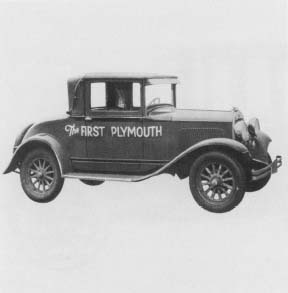
On November 2, 1978, Chrysler announced its worse quarterly loss ever: $159 million. That same day, the company's board of directors named Lee Iacocca president and chief operating officer (COO), with the understanding that he would become chief executive officer (CEO) by 1980. Iacocca was a longtime auto executive who had been fired from Ford Motor just two months before. His job was to rejuvenate the company and increase profitability. Iacocca did all that was asked of him and more. He ultimately helped create one of the biggest turnarounds of a major corporation in the history of the United States.
As soon as Iacocca took over at Chrysler, he began recruiting some of Ford's top executives, who later became known as Iacocca's "Gang of Ford." While Iacocca was busy recruiting, other Chrysler executives were in Washington, D.C., unsuccessfully pleading for federal aid. The company said it
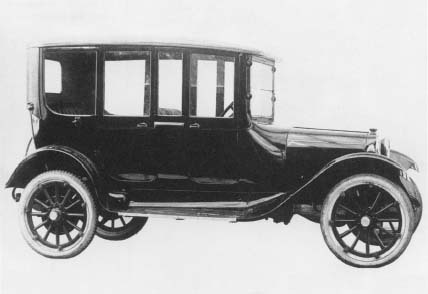
In late 1979, Iacocca got involved in the political fight. In 1980, he persuaded Congress to pass, and President Jimmy Carter (1924-) to sign, a $1.5 billion loan guarantee package. This meant that if Chrysler could not pay back the loan in ten years, the federal government would have to pay it off. The company, however, not only paid off the federal loan, it did so seven years ahead of schedule. By then the United States had come out of a recession, an economic downturn, and American consumers were on a car buying spree. According to Doron P. Levin in his 1995 book, Behind the Wheel at Chrysler, "Car buying was strong, and overnight Iacocca was riding tall again." Iacocca remained with Chrysler until 1993 when he left the company and was replaced as CEO by chief operating officer Robert J. Eaton.
Making a Comeback
During the reign of Iacocca, Chrysler made a surprising comeback from the edge of extinction. It sold its defense division to General Dynamics, a large Virginia-based corporation that built ships, airplanes, military armament, and computer information systems. The sale allowed Chrysler to concentrate more on consumer vehicles. As a result, it introduced several new models that contributed to the company's turnaround. In 1981, Chrysler launched the popular K-series of cars. The company also introduced an entirely new type of vehicle in 1984 when it rolled out the Dodge Caravan and Plymouth Voyager. The new "minivans" proved to be extremely popular with families, and helped spark the minivan craze of the late 1980s and 1990s.
In 1985, Chrysler and Mitsubishi Motors Corporation established a joint company, Diamond-Star Motors, to produce small cars, which American buyers were clamoring for because they were economical to drive. (Chrysler withdrew from the venture in 1991.) Two years later, Chrysler, now the number-three U.S. automaker, paid $800 million to acquire the number-four U.S. automaker, American Motors Corporation (AMC). The purchase included AMC's Jeep division. The company closed the decade with a massive reorganization program that included $1 billion in cost-cutting measures.
Chrysler and the Cold War
By the early 1950s, the Cold War between the United States and the Soviet Union was well underway. Each country sought to protect its way of life, and was suspicious of the other. Because of their suspicions they stockpiled, or accumulated, nuclear weapons and were looking for ways to improve them. In 1952, Chrysler began building the Chrysler PGM-19, or Jupiter intermediate range ballistic missile, which could hit a target 1,500 miles (2,400 kilometers) away from where it was launched. The first test launch was in 1957 and missiles were sent to bases in Italy and Turkey in 1961, where they would be close enough to strike the Soviet Union. In 1960, production of Jupiter missiles stopped as more advanced missiles were developed to take their place, but the ones already built remained in service until 1964. In 1958, components from a Chrysler-built Jupiter launched America's first satellite, Explorer I.
In 1994, Chrysler posted its highest ever net earnings of $3.7 billion on total sales of $52.2 billion. And by 1998, the company was a dynamic and profitable entity that had cornered the minivan market and almost single-handedly launched the sport utility vehicle (SUV) craze, with its Jeep Grand Cherokee. It also had a line of well designed midsize cars and a high profit-per-vehicle ratio.
Chrysler's success drew the attention of Germany's Daimler-Benz executives, who had conquered the respected, but limited, luxury-sedan market. In contrast to the German company, Chrysler had almost no international presence, while Daimler-Benz envied Chrysler's well-grounded designs and mass-production capabilities.
DaimlerChrysler Is Born
In early 1998, Daimler-Benz chair Juergen Schrempp visited Chrysler CEO Robert Eaton at his Auburn Hills, Michigan, office. During a brief meeting, which lasted only seventeen minutes, the two executives agreed to look into a potential merger. In early May, after many more top secret meetings, the merger was announced. It was finalized by the end of the year, and Eaton, along with Schrempp, shared the role of chief executive officer of the newly formed DaimlerChrysler AG. In 2000, Eaton left the company and was replaced by German executive Dieter Zetsche, who became president and CEO of the Chrysler Group. Eaton had been with Chrysler for seven years and guided it through its most profitable era.
The DaimlerChrysler merger created a new international powerhouse, with revenues of $130 billion and 421,000 employees on several continents. By 2001, however, it became clear that the German half of DaimlerChrysler was the dominate partner, and some analysts said that Schrempp and Zetsche ruled with iron fists. In a 2001 article, The Economist called the German auto executives "overlords" and reported that many employees resented the direction the company had taken since the merger. That same year, DaimlerChrysler announced a three-year cost-cutting program that included closing six plants, reducing production at seven other plants, and cutting twenty-six thousand jobs. As it went into 2002, the company conducted another management shake-up, this time in the Chrysler Group's marketing departments.
Gearing Up for the Future
Since its inception, Chrysler has been the most precarious of the top three American automakers. The company twice teetered on the verge of bankruptcy: once in the late 1970s
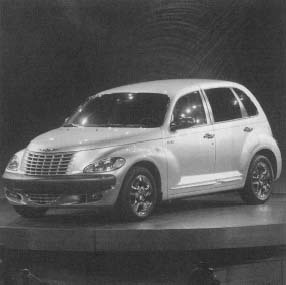
The DaimlerChrysler deal of 1998 appeared to have ended Chrysler's long history of financial problems. The German company adopted a more conservative management policy and cut costs where necessary, which included laying off employees and closing plants. The future of DaimlerChrysler, however, depended a lot on several factors beyond the company's control: the price of gasoline; the global, and particularly the U.S., economy; and calls from the federal government for stricter safety features, emission control, and better fuel efficiency. In the early twenty-first century, DaimlerChrysler focused on the factors it could control, such as production costs, the number of vehicles it produced, and responding to the ever-changing car buying habits of consumers.
Comment about this article, ask questions, or add new information about this topic: